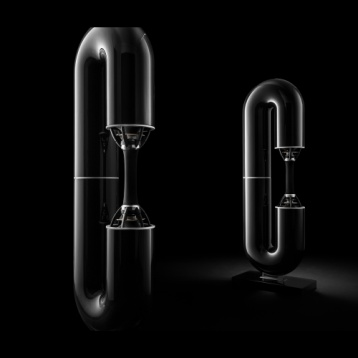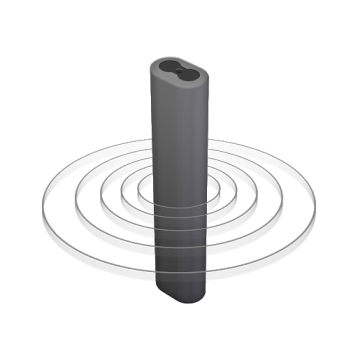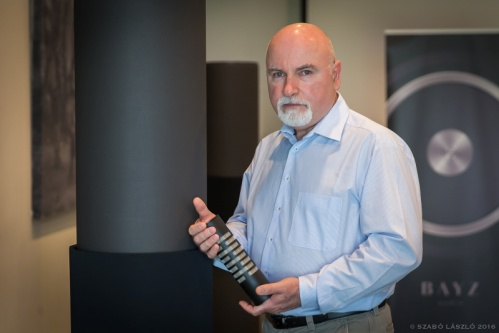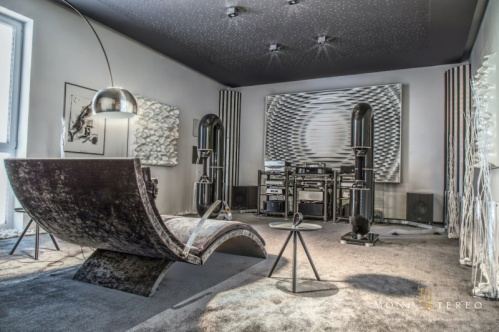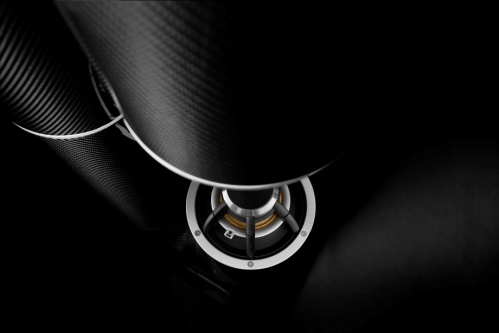Decades of research and development on radial sound projection by Zoltan Bay, the founder, finally came to fruition in 2011. He created an original concept unit of radial sound projection, namely Bay Radial Speaker (BRS). BRS has a cylindrical membrane surface made of a special material that can change its diameter. It produces sound by vibrating in the radiation direction. This is a revolutionary new radial unit, and has been patented in many countries/regions. Its uniqueness comes not only from its ability to project radial sound, but also from its excellent sound quality.
The excellent acoustic and electronic parameters of BRS provide unprecedented sound quality, and bring the quality of Hi-End sound reproduction to a new level. Due to its excellent impulse response, the concept of holographic acoustics has been redefined. It can reproduce the spatial position and size of musical instruments, so that listeners can basically perceive them.
Because the total surface area of the vibrating diaphragm used is many times (up to 30-50 times) that of a dome tweeter, the acoustic energy projected into the environment is much less concentrated in a single direction, thus providing listeners a more pleasant listening experience with the sound field produced.
In our experience, the BRS audio quality is much less affected by the acoustic characteristics of the environment, in other words, it is able to provide unique sound quality to listeners even in relatively poor conditions.
Due to its structural design, it handles extreme impulse loads much better than the usual dome tweeters.
With regard to sound pressure, output and frequency response, traditional speakers have been challenging the limits that human ears can perceive for a long time. In order to achieve the ultimate goal of more realistic sound reproduction, Hi-End speaker developers have gradually turned their attention to a 360° sounding speaker and proposed many different technical solutions for the device, in order to accurately create radial or omnidirectional sound fields. However, the solutions to date can only achieve radial sound projection with significant compromises.
The spatial projection ability of radial sound radiation provides a surpassing spatial experience compared with that of a traditional speaker. In current Hi-End community, it is well known that in order to get the right stereo sound, a speaker must be placed in a carefully selected position in the room. For example, it must be 0.5 - 1.0m away from the wall behind. For dipole speakers, the stereo experience is highly dependent on the precise locations of speakers and listeners. Radial or omnidirectional speakers can mitigate these positioning disadvantages.
 Your current location:
home
>
Exhibition Hall Online
>
Venue Layout
>
N1
>
Hungary
>
Shantou Zesen Electrical Equip...
Your current location:
home
>
Exhibition Hall Online
>
Venue Layout
>
N1
>
Hungary
>
Shantou Zesen Electrical Equip...
